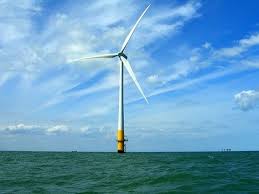Power: Energy for all in 2020
Posted on : Saturday , 29th August 2015

The government will have to act quickly and mobilise funds to connect all of the country's population centres to the national grid in the next five years. With inadequate electricity supplies sapping the country's economic growth, the government has launched several large projects to increase generation capacity and connect more customers to the national grid.
The limitations of Kenya's current energy infrastructure are stark. Amos Njau, who runs a printing plant in downtown Nairobi, explains: "As a big consumer of energy, I face two problems: the relatively high cost of electricity and [its] reliability.
You can never be sure when there will be power, and this hurts the business, especially so because we have very tight production schedules." Njau, who does the wholesale printing of magazines, brochures and marketing merchandise, adds: "Electricity costs take up to 40% of my overall expenses. Any efforts to stabilise supply and cut energy costs are welcome. I have had to install a generator." Each month, he suffers at least three major outages that last for about a total of five hours.
If the government's plans work out, it will connect 70% of the population to the electricity network by 2018, the same year that it expects commercial oil and gas production to start. President Uhuru Kenyatta's government now estimates that only about 40% of Kenyans have access to electricity.
Last-mile connectivity
To increase that percentage, Kenya will roll out the last-mile connectivity project, a three-phased government- and donor-funded programme, in September.
The first phase aims to provide access for at least 1.5 million Kenyans living within a 600-metre radius of existing transformers, at a cost of $142.2m. The second and third phases, which will cost more than $250m, will see the installation of new transformers and the extension of the low-voltage network. These two phases should connect an estimated 2.5 million people in total.
The government's ambitious energy goal is universal access by 2020, but planning and finance remain the largest stumbling blocks. Data from the World Bank show that in the East African region, Kenya has the second-highest number of households without electricity at 6.2m after Tanzania's 7.2m.
There are plenty of opportunities to boost production. Electricity producer KenGen says it has discovered more steam wells that can generate up to 375MW at its Olkaria fields towards the west of Nairobi. The additional power capacity is expected to boost the plan to hook more households into the national grid, with the government planning to add at least 5,000MW by 2017.
One of the projects expected to begin production by 2017 is the ambitious Lake Turkana wind farm, which just began construction in early July and will have the capacity to produce up to 310MW.
In the next few months, companies are also expected to step up their exploration programmes at coal deposits in three counties— Taita Taveta, Kwale and Kilifi. The energy ministry estimates that coal alone will add at least 2,400MW of electricity to the national grid by 2030.
A group of companies, which include Centum Investment and Gulf Energy, won a government contract to build a 1,000MW coal-fired plant at Lamu in September 2014.
In the longer term, Kenya's nascent oil and gas sector could help to meet the country's growing energy needs. While the government expects first production in three years' time, the recent downturn in oil prices is dampening appetites for Kenyan exploration projects.
In April, Australia's Pan-continental Oil and Gas gave up its 25% stake in a block in the Lamu Basin. Nonetheless Tullow and Africa Oil have made estimated oil discoveries of more than 600m barrels in northern Kenya and are expected to submit their development plans to the government in the next five months.
If neighbouring countries like Uganda offer a guide to how negotiations between the companies and government could go, Kenyan residents will be waiting a long time for oil and gas to contribute to national-scale projects like energy production.
Source : theafricareport.com


